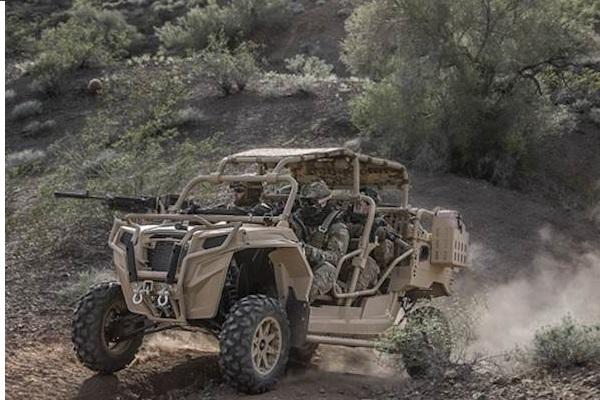The U.S. Army's 1st Brigade Combat Team of the 82nd Airborne Division will jump into Poland next month in a test of their ability to bolster NATO's eastern flank in a hurry. It will also be a test of the ability of their new all-terrain vehicles to get them quickly out of the drop zone.
Col. Colin Tuley, commander of the 1st BCT, said the jump over Torun, Poland, by a battalion of about 600 of his paratroopers was meant to demonstrate the "readiness and deployability" of the Global Response Force to shore up allies and meet any threat worldwide on quick notice.
Tuley, a veteran of multiple tours in Afghanistan and Iraq and the former deputy commander of the 75th Ranger Regiment, skirted the question of whether the threat in the particular case of the Swift Response 16 exercise in Poland was Russia.
The goal was to show "really a united front -- for whatever reason," Tuley said in a phone interview from Fort Bragg, North Carolina, home of the 82nd, with Pentagon reporters.
"It could be to conduct peacekeeping, it could be how do you respond to heavy immigration challenges in Europe," he said. "It's really just a symbol of a united front amongst alliances and their partners."
Tuley's battalion will take off from Fort Bragg and rig in the air on the 10-hour flight on June 6, the anniversary of the World War II D-Day landings in Normandy and a hallowed date for the 82nd Division, which helped liberate France.
The troops will be dropping with about 10 of their MRZR all-terrain vehicles made by Minnesota-based Polaris Defense. (MRZR is not an acronym but simply a designator, said a Polaris spokeswoman.)
The four-seat MRZRs were still a "pilot program" for the 82nd but were intended to give the paratroopers more mobility once they hit the ground. "It's a little more robust" than commercial ATVs, Tuley said.
"These vehicles significantly enhance what would otherwise be foot mobility," Brig. Gen. Brian Winski, deputy commander of the 82nd Airborne, told Bloomberg News. "They change the dynamic and turn what would have been a three-mile per hour operation into a 50-mile per hour operation."
"Swift Response will demonstrate the allies' ability to respond to a crisis scenario from staging bases in both Europe and the U.S. within 18 hours of notification," the Army said in a statement.
The exercise, which will run from May 27 to June 26, will include more than 5,000 soldiers and airmen from Belgium, France, Germany, Great Britain, Italy, the Netherlands, Poland, Portugal, Spain and the United States, and will take place in Poland and Germany.
On the jump into Poland, the 1st BCT troops will be joined by about 1,000 paratroopers from the British 16 Air Assault Brigade and the Polish 6th Airborne Brigade. At the same time, the Europe-based 173rd Airborne Brigade will deploy from staging bases in Germany to conduct airborne assaults onto training areas in northern Poland.
The second phase of Swift Response 16 will take place in Germany at the U.S. Army's Grafenwoehr and Hohenfels Training Areas, and will include another Joint Forcible Entry airdrop.
-- Richard Sisk can be reached at Richard.Sisk@Military.com.





























